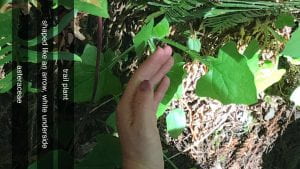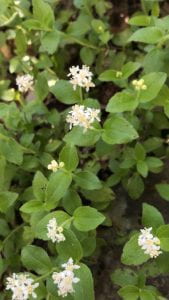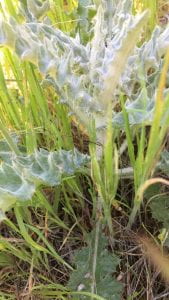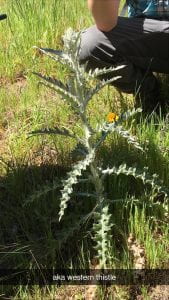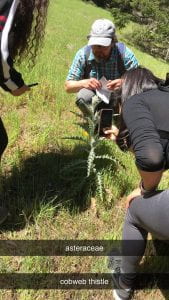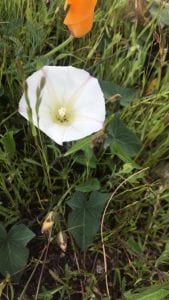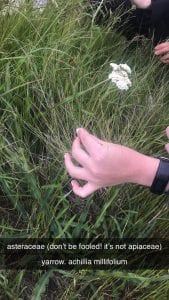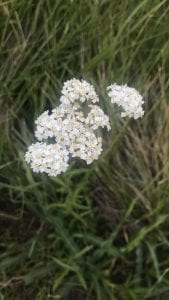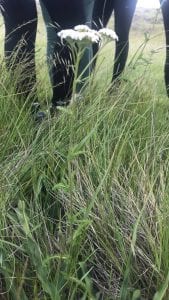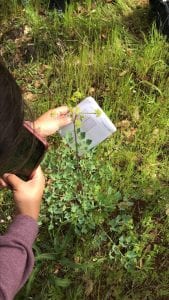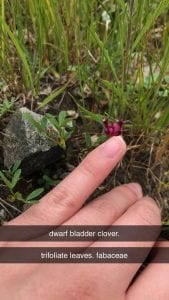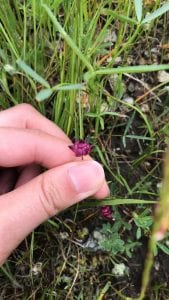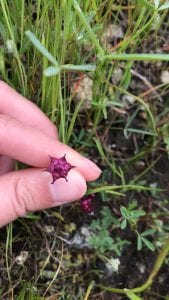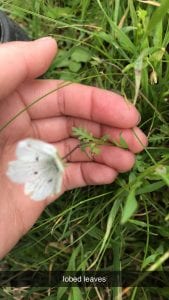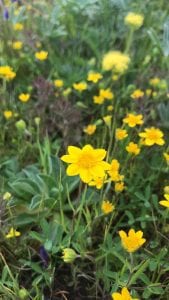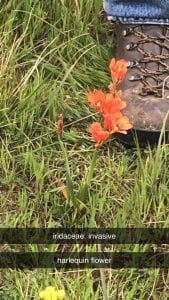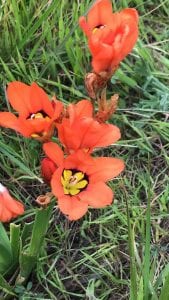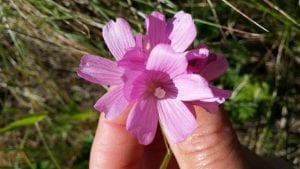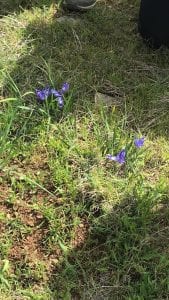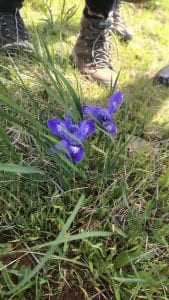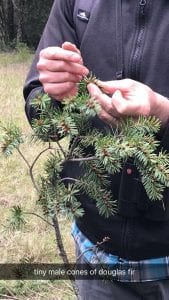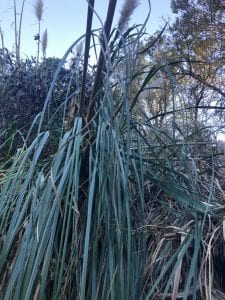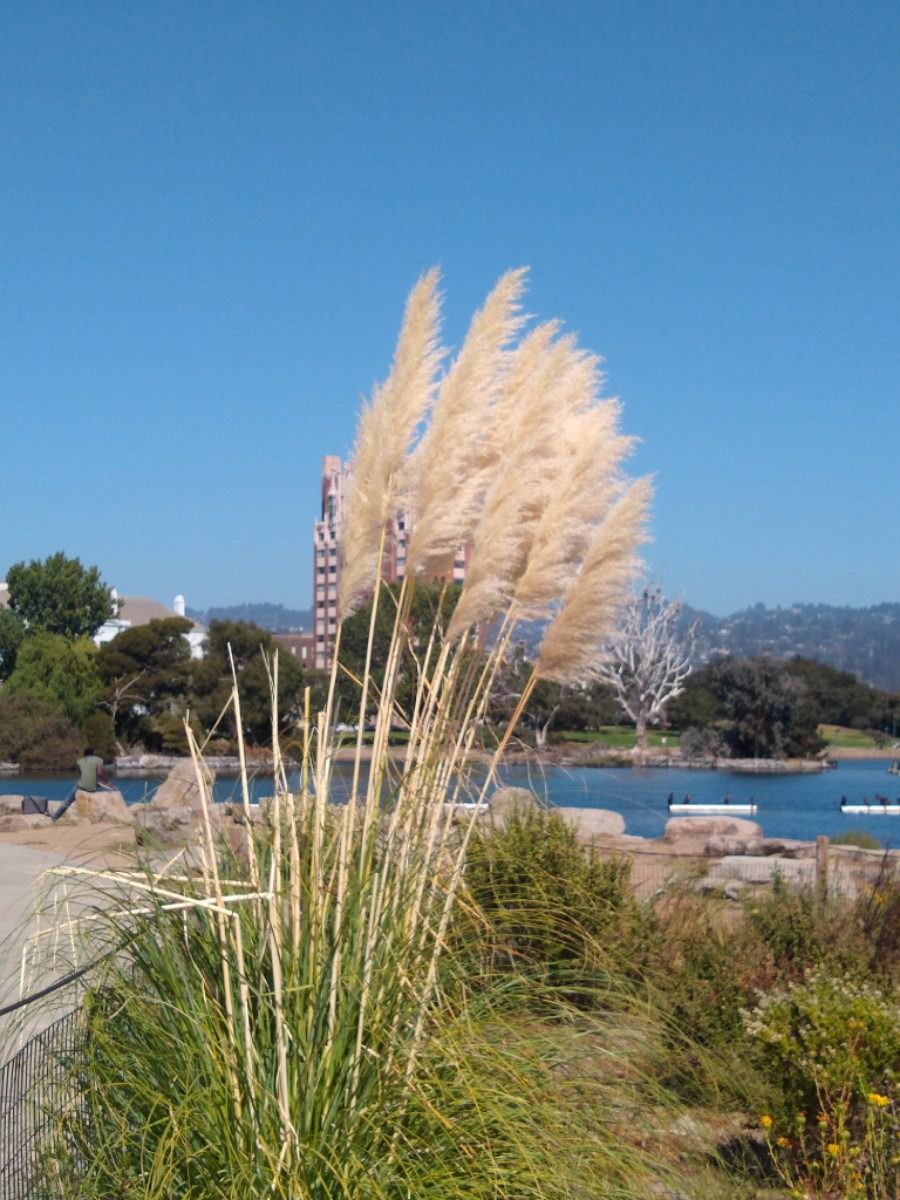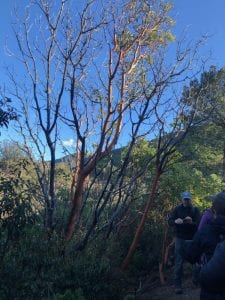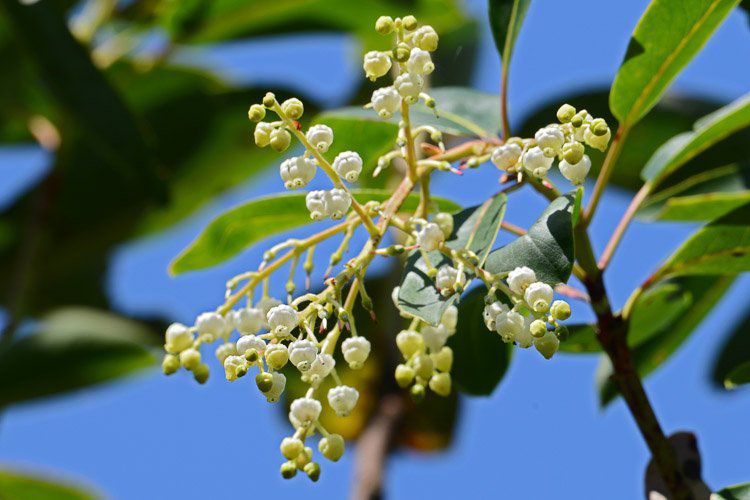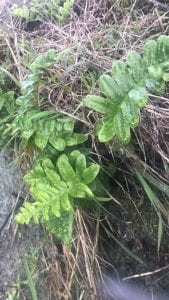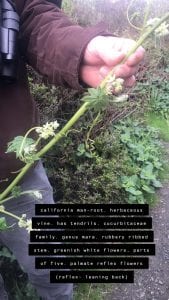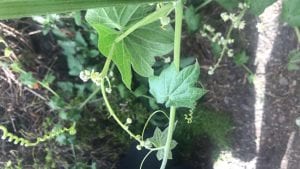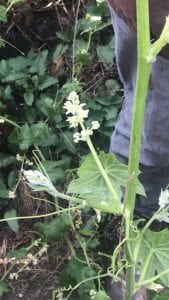Cassandra Odulio
- Date: May 2, 2019
- Location: Mount Tamalpais Pantoll to Steep Ravine 37.924659, -122.596728
- Habitats seen: forest, coastal cliff
- Weather: sunny, warm, breezy
This hike started out in the forest, on dirt trails riddled with roots. I had to watch the ground every second to make sure I didn’t trip. There were some new weird-looking plants in this forest, like sticky snakeroot, salmon berry, five-fingered maidenhair fern, and trail plant. At one point, the trail became very narrow, and the plants grew close to the path. I had to dodge branches, but unluckily, the one branch I was not able to dodge was poison oak. It only hit my shirt, but I don’t know if the people in front of/behind me were so lucky. Alec gave us some advice about cleaning off the oils (use cold water, scrub with normal soap and a washcloth). Eventually, we emerged from the forest onto a beautiful sunshiny cliff overlooking the ocean. We saw some vultures flying overhead, I think, and we also identified a few plants there while waiting for the cars to pick us up.
Adiantum aleuticum – Five finger maidenhair
This herbaceous plant is in the Pteridaceae family. The leaves grow out of a black circular stem and are pinnately compound. They grow on embankments and in serpentine soils, which is why they are also known as serpentine maidenhair.
Adenocaulon bicolor – American trailplant
This herbaceous plant is in the Asteraceae family. Apparently it is/was used to mark trails/directions if one is lost in the forest, by flipping the arrow-shaped leaf upside down to show the white underside. The leaves are thin and rubbery, and the flowers are small and white, growing out the tops of tall stems. (I don’t know why one of the pictures is sideways, but oh well.)
Aralia californica – California spikenard
This herbaceous plant is in the Araliaceae family, and yes, it is herbaceous, even though it is taller than me. The leaves are large and bipinnately compound. It likes to grow in wet areas, and is almost always found near streams. The inflorescences are weird-looking, and I don’t know how to describe them, but Jepson eFlora calls them “umbels in clusters of 2–few or in spreading panicles.”





